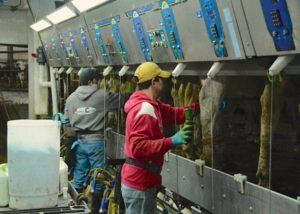Published 3/1/21 at dairyherd.com - Training Tips for the Long Haul | Dairy Herd

On-going emplyee training is essential to success...both theirs and yours
Pablo enjoyed his first day at ABC Dairy. He felt welcomed and wanted. Although he had little experience, the training offered the first week was top-notch.
That was then and Pablo has now been at the dairy for more than a year. He is still in the same position, following the same protocols. He is stuck and feels like he is just a number.
In chatting with Pablo, it became evident he was unhappy with his current role. He had no additional training beyond the first week, was unsure of the roles he could work toward and had little knowledge of the farm’s goals and aspirations. He was considering changing jobs.
Maintaining good employees for the long haul is a difficult task that never ends. Most farms feel that once they have a good milker, they are golden and can move on to other things.
The benefits of ongoing employee training are essential to the success of the employee and the organization. The initial training is only the groundwork. When your team members develop more skills and knowledge, your business excels. Employees are your most-valued asset and investing in them increases your competitive edge.
Ongoing training also improves job satisfaction, retention and productivity.
When working with Pablo’s employer, we suggested the following:
Prepare a training program.
-
Write down everything you want employees to know and understand.
-
Add safety training sessions throughout the year.
-
Make a list of advanced training options for the more skilled roles.
-
Ask your employees where they need additional training or what they would like to learn.
-
Set training goals for each employee and/or role.
-
Train your key managers to offer encouragement and feedback during shifts.
-
Schedule weekly or monthly sessions that focus on goals and expectations for each work area.
-
Schedule quarterly training sessions that might involve a demonstration, video, outside resource or hands-on experience.
-
Use employees as trainers when possible. Sometimes they can be your best trainers.
-
Cross-train workers. It helps advance skills and can prove essential during staff shortages.
-
Offer rewards or certificates upon completion of training sessions.
-
Bring in lunch or snacks.
-
Complete employee evaluations at least yearly and use this time to gauge how your training program is working.
When Pablo’s employer implemented a training plan and program, Pablo’s job satisfaction skyrocketed. He learned new skills that allowed him to move into other roles on the dairy. He is more valuable than ever to the farm because he skill set is deeper and he can flex into more roles when needed.
When I last spoke to Pablo, he indicated there was no way he was leaving this job soon. Everyone won.
